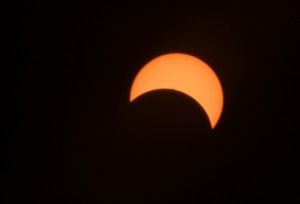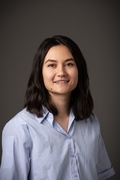Two days after the December 6 shooting on the campus of UNLV, President Joe Biden met with students and members of the university community in Las Vegas.
“This is not normal, and we can never let it become normal,” Biden told the crowd at the Carpenters International Training Center.
But this country’s landscape of gun violence is different for today’s students than it was for their parents. It’s evident in how routine mass shootings have become. The Gun Violence Archive has recorded 38 mass killings involving a firearm this year in which four people or more were killed—higher than any year since at least 2006.
In the days following last week’s shooting—when a 67-year-old gunman entered the campus and killed three professors and injured one before being killed in a shootout with police—the UNLV community gathered for at least one vigil honoring slain professor of Japanese language and culture Naoko Takemaru. Authorities identified the other victims as Cha-Jan “Jerry” Chang, an associate professor of business, and Patricia Navarro Velez, an assistant professor of accounting. A fourth, unidentified victim, a 38-year-old visiting professor, has been hospitalized.
UNLV also planned an afternoon vigil December 13 on the north end of the Academic Mall near the Lee Pascal Rose Garden.
Sophomore student Imer Cespedes never imagined he would have to deal with this kind of trauma and tragedy in his college career. The first-generation political science major was born in the U.S., raised in Costa Rica and came back to the U.S. four years ago to pursue his dream of higher education.
“I decided to follow my American dream … a college degree. So when I was 16, I came back with my parents,” Cespedes says. “I never expected to survive or experience a terrifying moment like two days ago.”
When the shooting occurred, Cespedes was on the second floor of the student union helping conduct a political training event for about 100 students, he says.
“We just heard people screaming, running in the hall. … One of the organizers says, ‘There’s an active shooter. We need to lock the doors, turn off the lights.’ And we just divided to the corners of the room,” Cespedes recalls. “We were thinking we need to fight back if that person tries to come into the room.
“In that moment, I just analyzed the situation and said this could be my last time talking to my parents. So I called my dad and said this is a situation that I wasn’t expecting. I’m afraid for my life.”
Sara Hejazi, a biology major and also a sophomore, was getting coffee and planning to study in the hospitality building next to Frank and Estella Beam Hall, where the shooting took place. She and about 14 other people hid in a storage closet for three and a half hours before they were evacuated.
She says she was able to text her parents while in the room, and they were “very paranoid, very upset.”
“My dad was raised in the U.S., and he personally did not experience any mass shootings,” Hejazi says. “[Parents] seeing their children experience this is a scary experience, because they’ve never been a part of it themselves.”
Licensed counselors with Bridge Counseling Associates in Las Vegas say that, even before December 6, they’d noticed the pervasiveness of mass shootings in their adolescent and young adult patients. Clinical director Dan Ficalora says students today tend to normalize mass shootings to make it easier to cope with reality.
“We were in high school when Columbine happened. So we were kind of the first generation that grew up with this being a reality,” Ficalora says. “But I remember when I was in the therapy office as a professional, and the first time one of my adolescents would say, ‘Oh yeah, we had a shooter drill today,’ or, ‘Today was a soft lockdown or hard lockdown,’ and I had to stop. Those were new terms for me. … This is so built into their development now.”
Marriage and family therapy supervisor Megan Tennant says normalizing is a very natural reaction, as a way to deal with powerlessness to change the reality of mass shootings.
“[When] it feels more normal, average, everyday, it’s not as big and scary, and then I don’t have to confront it,” she says. “At the same time, confronting it, for this age group—what can they do about it? All they can do is try and survive.”
Cespedes echoes that. He largely blames a “broken system of public safety policies” and leaders for not taking action to strengthen those policies, leaving youth just “trying to survive.”
“Last legislative [session], we had a governor who vetoed three bills on gun safety,” Cespedes says, referencing bills that would have raised the age to buy assault rifles to 21, prohibited guns near voting sites and closed a loophole allowing the production of ghost guns. Republican Gov. Joe Lombardo vetoed all three gun safety bills Democrats passed in the 2023 legislative session.
“What would make me feel safer is to see public safety policies, gun safety policies in the upcoming Legislature in 2025, and also seeing [the Nevada System of Higher Education] doing something for the safety of our students,” Cespedes says. “We don’t want to live through this cycle again. … People right now have thoughts and prayers, but the cycle will continue.”
Leaders in the Nevada System of Higher Education have issued statements directing students and faculty to UNLV’s website and the Vegas Strong Resiliency Center for resources including free mental health services.
“We are all hurting right now. But it’s in these trying times that we need to lean on one another for support,” UNLV President Keith Whitfield said in a letter to students, faculty and staff. “I urge you to check in on each other and utilize counseling services if you need them.”
Students can seek assistance through Student Counseling & Psychological Services (CAPS) at UNLV’s Student Recreation & Wellness Building, while staff can find help from the Employee Assistance Program (EAP) managed by ComPsych.
Asked whether she thinks the campus will ever feel normal again, Hejazi says no.
“I go to campus Monday through Thursday every week, and I usually stay on campus from around 8:30 a.m. to sometimes 8 p.m. I study there, I go to the Student Union, I go to the library, the hospitality building. So it’s basically my second home. And just to feel like I can’t be safe in my second home, it’s not a good feeling. … You just don’t want to feel like you don’t have control over your safety,” she says.
Ficalora and Tennant expect students who were on campus December 6 will have trauma symptoms surfacing in the coming weeks, months and even years. Those include avoidance of situations and environments reminiscent of what they were doing before the shooting started, generalization of that avoidance, and even flashbacks and other symptoms of post-traumatic stress.
“When classes resume ... and they come back for next semester, that’s where we’re going to see a lot of the symptomology start to present itself,” Ficalora says.
The counselors add that the city’s experience with the October 1, 2017, shooting in which 58 people were killed immediately (a number that has since grown to 60), has a “compounding effect” on the aftermath of the more recent shooting. Unresolved trauma from these events can make it increasingly difficult to function in everyday settings.
“Something that happens when we experience multiple traumas in the same vein is that we can start to have a generalization effect,” Ficalora says. “So before, we’d say, ‘OK, just concerts and big events. Those are unsafe. As long as I avoid those kinds of events, I’ll be OK.’ And it very quickly becomes, ‘No place is safe. I can’t leave my house.’”
The hope is that, with time and help from the community and mental health professionals, campus life will feel normal again at some point in the future. For now, UNLV has announced the cancellation of on-campus, in-person final exams for the fall semester, which would have taken place starting this week.
Hejazi says she felt “relieved” at that announcement. She never had the opportunity to study for her exams, and was unable to get anything done in the days following the shooting.
“Yesterday, I started to feel the physical effects of the stress on my body. So I’ve had multiple anxiety attacks just throughout the day, and just shortness of breath [and] a high heart rate,” she says.
Cespedes says he’s still processing what happened. He’s considering decreasing the amount of credits he takes next semester, as he’s not sure he can handle a 17-credit course load after such a traumatic experience.
“I’m trying to get better from the situation, because I’ve been having sleep trouble, breaking points,” he says. “So right now, college students are trying to unite to support each other mentally. Many of my friends are analyzing the situation to change to another university like ... College of Southern Nevada or just take part-time classes.”
Ficalora says the best way to develop resiliency to something negative happening is to focus on your mental well-being all the time, and “if you don’t know where to start, the best way to do that is to get yourself with a licensed therapist that can guide you through that journey.”
Tennant says young adults and adolescents respond to outreach best when they have freedom to choose when and how to respond.
“Let them know that we’re here for you in whatever capacity you will allow us to be,” she says. “When they’re ready to talk about it, they will. Be there and connect with them. But don’t push. Allow them that choice.”
Click HERE to subscribe for free to the Weekly Fix, the digital edition of Las Vegas Weekly! Stay up to date with the latest on Las Vegas concerts, shows, restaurants, bars and more, sent directly to your inbox!


